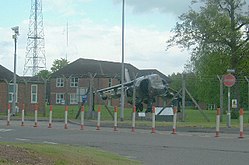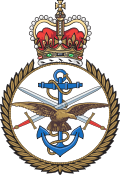| MOD Stafford Beacon Barracks | |
|---|---|
| Stafford, Staffordshire in England | |
 Beacon Barracks' gate guardian is a Hawker Siddeley Harrier | |
 | |
| Site information | |
| Type | Military barracks and support establishment |
| Owner | Ministry of Defence |
| Operator | |
| Location | |
| Coordinates | 52°49′26″N2°05′58″W / 52.824°N 2.099322°W |
| Area | 165 hectares [1] |
| Site history | |
| Built | 1938 |
| In use | 2006–present |
Ministry of Defence Stafford otherwise known as MOD Stafford, Stafford Station or Beacon Barracks is a Ministry of Defence site in Stafford, in England. It was formerly Royal Air Force Stafford or more simply RAF Stafford, a non-flying Royal Air Force station.
